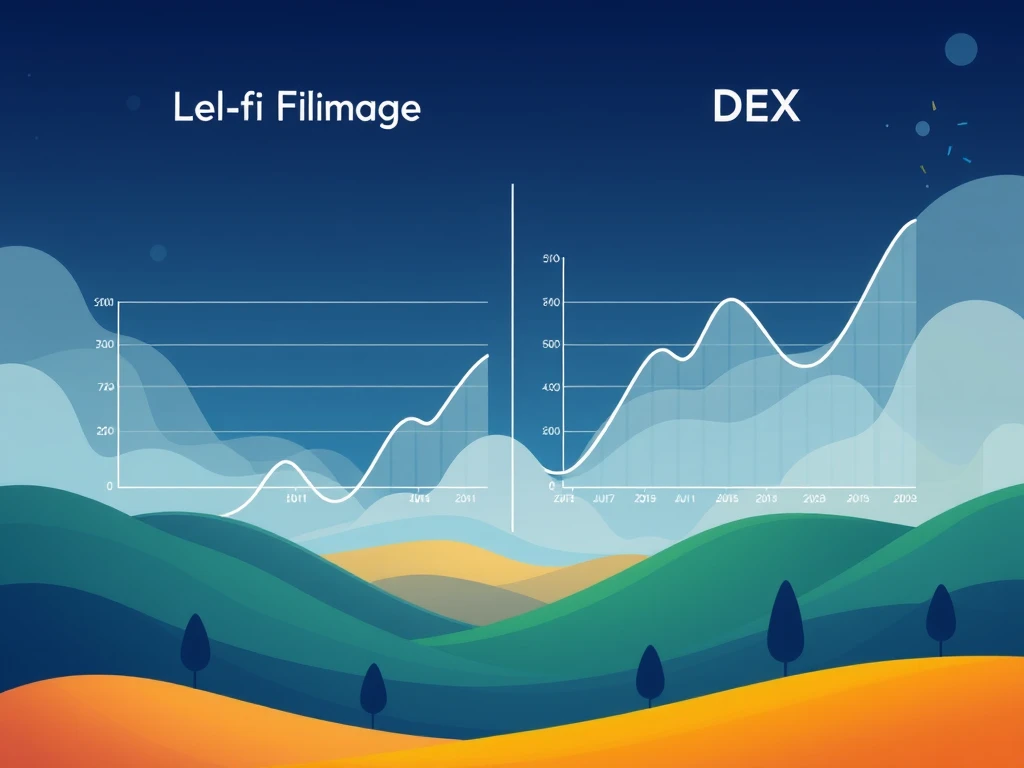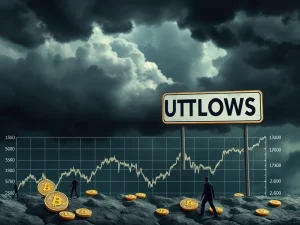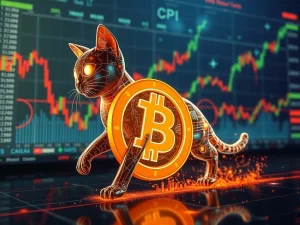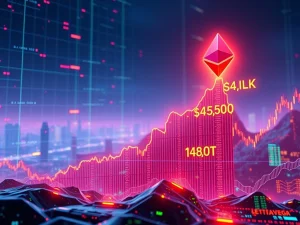DeFi Lending Explodes, Outpacing DEXs for Sustainable Yield

Are you navigating the world of cryptocurrency investments and searching for reliable ways to earn crypto yield? The landscape is clearly shifting. Total Value Locked (TVL) in DeFi lending protocols has reached impressive new heights this bull cycle, while decentralized exchanges (DEXs) have not kept pace. This trend suggests a fundamental change in what crypto users are prioritizing: a move towards more stable, sustainable yield opportunities.
What is Driving DeFi Lending’s Surge?
DeFi lending protocols have emerged as the dominant vertical within decentralized finance. Currently, DeFi lending holds $53.6 billion in TVL, making up 43% of the total $124.6 billion locked across all DeFi protocols. This figure even surpasses liquid staking in terms of locked value. Leading the charge is multichain lending protocol Aave, which alone accounts for nearly half of the DeFi lending market with $25 billion locked.
In contrast, DEXs, which once boasted significantly higher TVL, have seen a substantial decline from their peak of $85.3 billion in November 2021 down to $21.5 billion today. This divergence highlights a key shift in capital allocation within the DeFi ecosystem.
Why is Sustainable Yield Key for Crypto Users?
According to Henrik Andersson, founder of crypto fund Apollo Capital, the primary reason for this shift lies in the nature of the yield offered. Andersson suggests that lending is arguably the most sustainable way to produce yield in DeFi. This contrasts sharply with liquidity pooling on DEXs, which has become less profitable for many participants, largely due to the risk of impermanent loss.
Impermanent loss occurs when the price ratio of the assets in a liquidity pool changes after you deposit them. The larger the price change, the greater the impermanent loss, potentially eroding the gains from trading fees or token rewards. This volatility makes the crypto yield from DEX liquidity provision unpredictable and, at times, unsustainable.
The Decline of DEX TVL Explained
Beyond the issue of impermanent loss, other factors contribute to the falling DEX TVL:
- Uniswap v3’s Capital Efficiency: The design of protocols like Uniswap v3 is more capital efficient compared to older versions like v2. This means liquidity providers can potentially earn similar or higher rewards with less capital locked, reducing the overall TVL needed to support trading volumes.
- Rise of Intent-Based Swaps: Newer cross-chain trading mechanisms, such as intent-based swaps, often source liquidity from centralized exchanges rather than decentralized pools. This reduces the demand for liquidity within DEX protocols for certain types of trades.
Comparing Crypto Yield Strategies: Lending vs. LPing
DeFi lending protocols, like Aave and Compound Finance, allow users to earn yield by lending assets or borrow by providing collateral. Smart contracts automate the process, managing deposits, loans, and interest rates in a trustless manner. For example, supplying Ether (ETH) on Aave currently earns around 1.86% APY, while Tether (USDT) yields approximately 3.17% APY. These rates are generally more stable and predictable compared to DEX yields.
Providing liquidity to DEX pools, such as those on Uniswap, can sometimes offer higher potential rewards through trading fees and liquidity mining incentives. However, as noted, these yields are far less sustainable and can fluctuate significantly day-to-day, being heavily impacted by market volatility and impermanent loss.
DeFi TVL: A Broader Perspective and Market Dominance
The strength of DeFi lending isn’t just relative to DEXs; it’s also evident in its performance against centralized finance (CeFi) lending. A report from Galaxy Digital showed that DeFi-based crypto lending accounted for about 65% of the total market by the end of 2024, having consistently increased its market share against centralized lenders since late 2022.
This shift occurred partly in the wake of major centralized crypto lenders like Genesis, Celsius Network, BlockFi, and Voyager filing for bankruptcy. Their failures caused a massive contraction in the overall crypto lending market. However, DeFi lending protocols demonstrated remarkable resilience, leading the subsequent recovery with a nearly 960% increase in open borrows between Q4 2022 and Q4 2024.
Galaxy highlighted that this strong recovery is a testament to the robust design and risk management practices inherent in DeFi lending protocols, showcasing the benefits of algorithmic, overcollateralized, and supply-and-demand-driven borrowing models. Future growth in DeFi TVL, particularly in lending, is expected to be driven by increased institutional participation and clearer regulatory frameworks.
Conclusion
The current bull cycle has clearly favored DeFi lending over DEXs in terms of TVL growth. This trend is largely attributed to the pursuit of more sustainable yield by crypto users who are increasingly wary of the risks associated with volatile DEX liquidity pools and impermanent loss. Furthermore, the proven resilience and transparency of DeFi lending protocols following the collapse of major CeFi players have solidified their position as a preferred avenue for earning crypto yield and participating in the broader DeFi TVL ecosystem.










